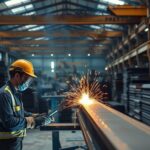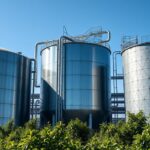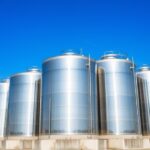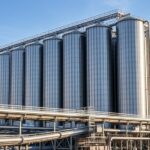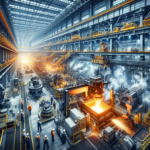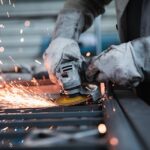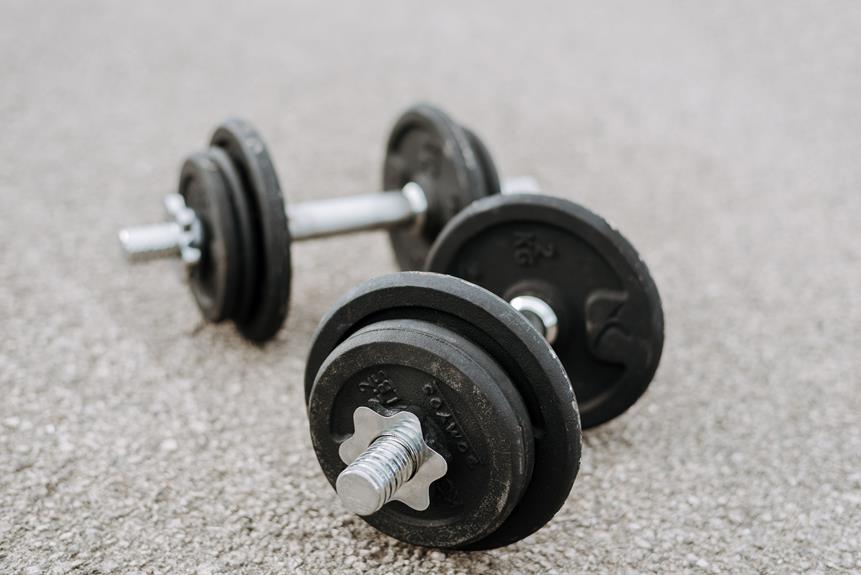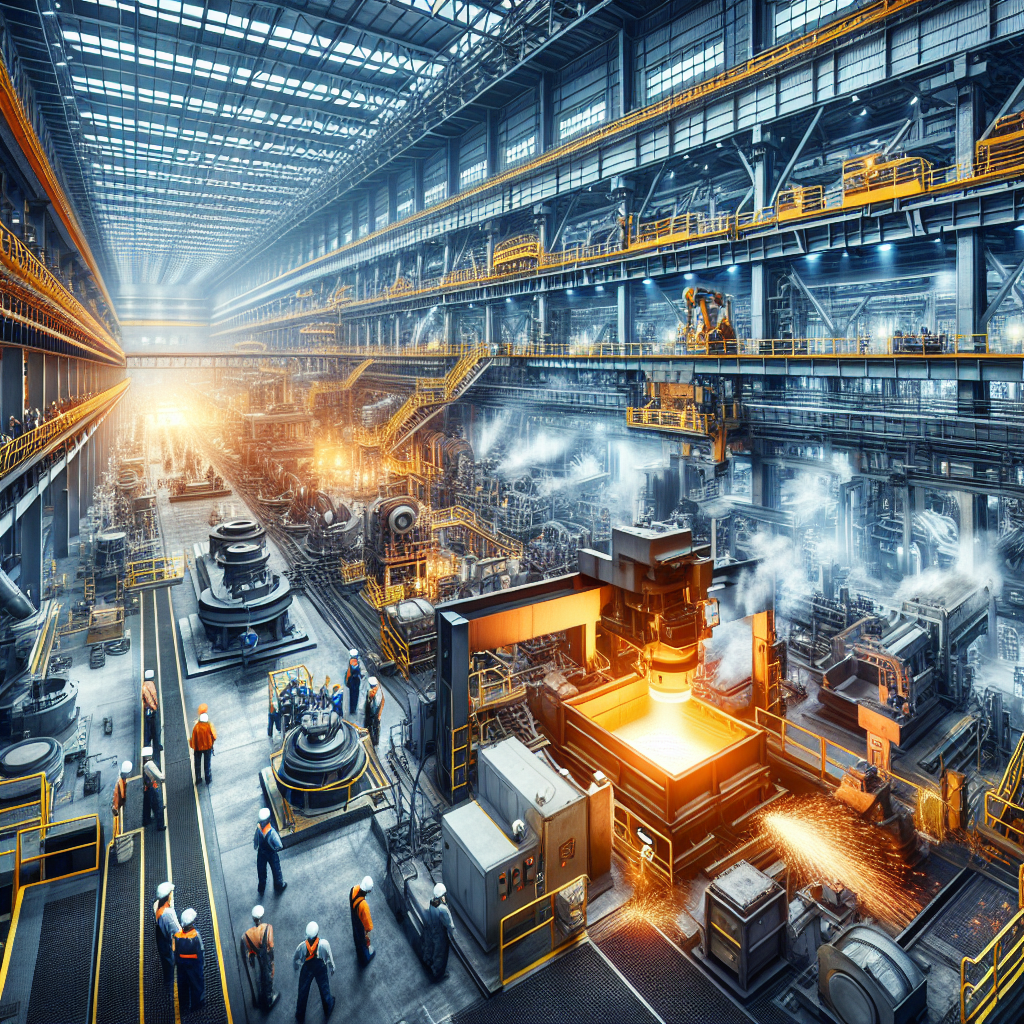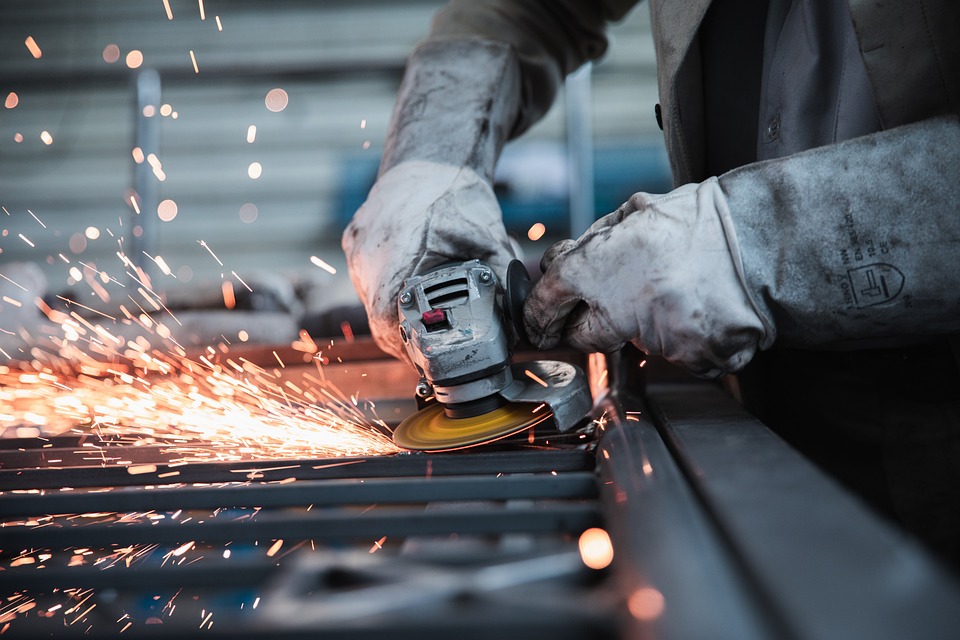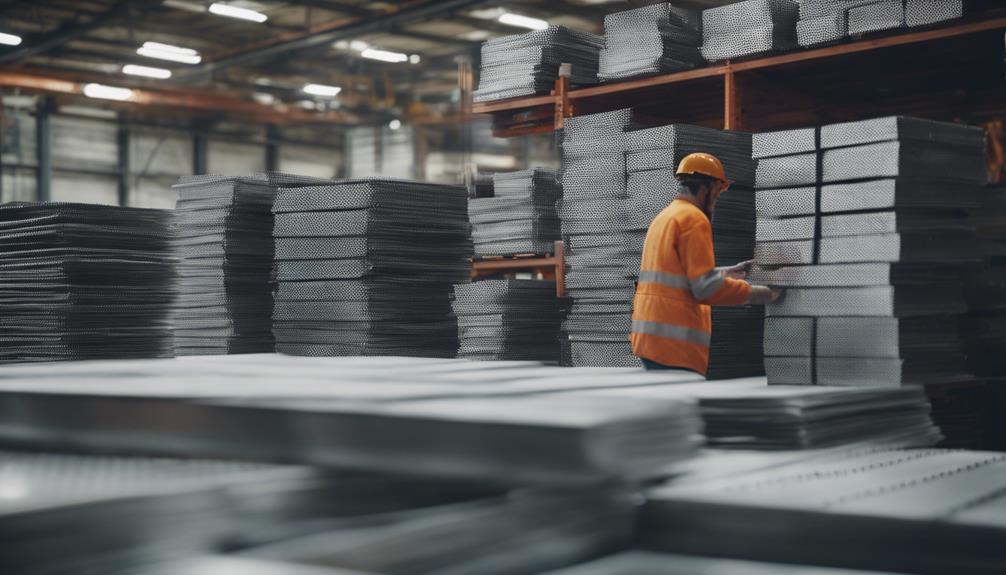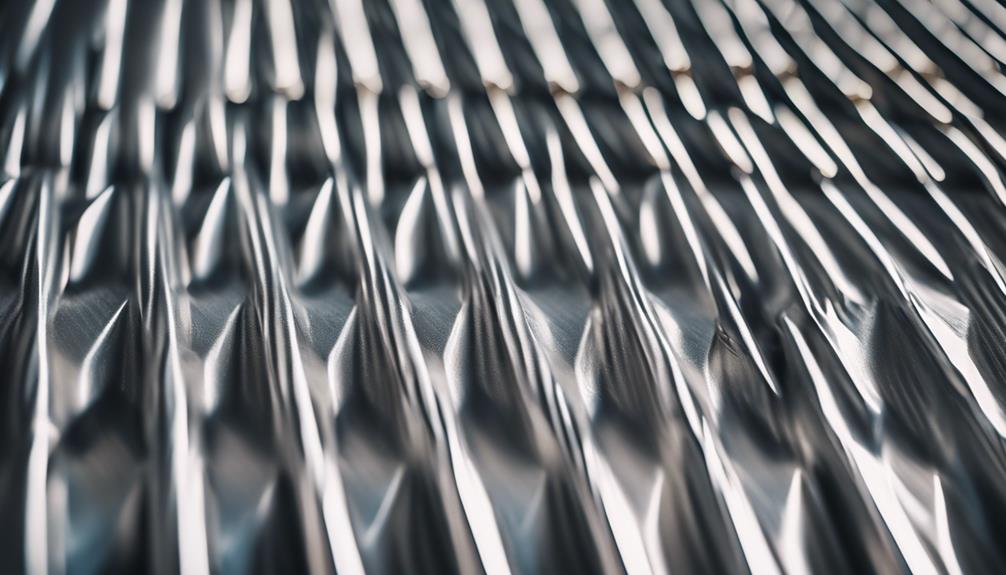In the bustling city of Jeddah, Saudi Arabia, a fusion of strength is taking place, one that goes beyond mere construction and engineering. It is the art of welding steel materials, a process that has become an integral part of the city’s fabric.
Here, in the heart of the Middle East, welding has evolved into a remarkable amalgamation of tradition and innovation, creating a visual spectacle that leaves onlookers in awe. From towering skyscrapers that seem to defy gravity to intricate metalwork that showcases the fusion of creativity and strength, Jeddah’s welding industry has undoubtedly made its mark.
But what lies beneath this fusion of strength? How has Jeddah managed to become a hub for welding excellence? Join us as we uncover the captivating story behind Jeddah’s fusion of strength, where steel materials are transformed into architectural marvels and works of art that captivate the senses.
History of Welding in Jeddah
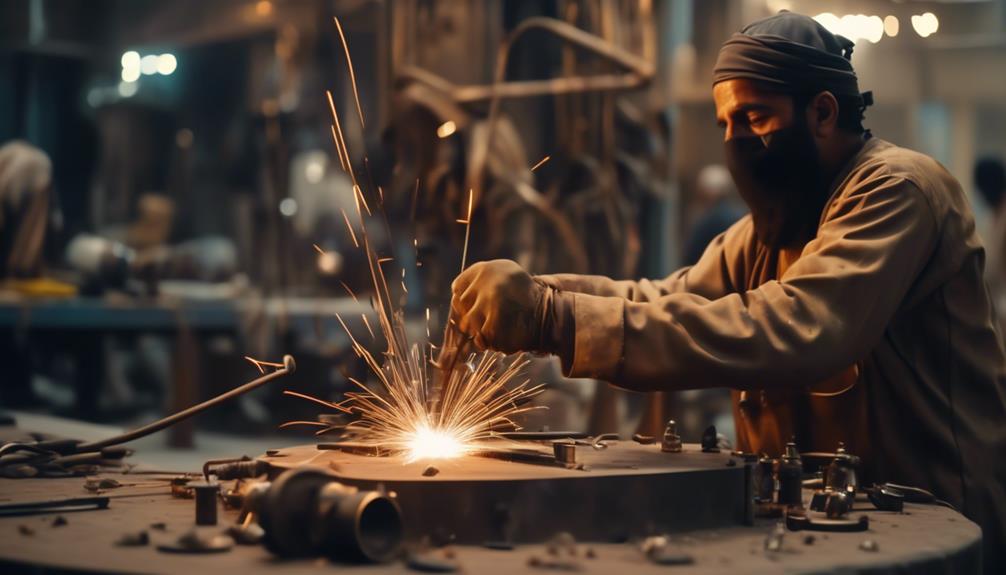
The history of welding in Jeddah traces back to the early 20th century, marking a significant milestone in the city’s industrial development. Jeddah’s welding pioneers played an instrumental role in introducing and advancing welding techniques in the region. These pioneers, with their innovative approach and dedication, laid the foundation for the evolution of welding techniques that are still being used today.
At the beginning of the 20th century, welding was a relatively new concept in Jeddah. However, with the discovery of oil and the subsequent growth of the city’s industrial sector, the demand for welding skills skyrocketed. Jeddah’s welding pioneers recognized this opportunity and began experimenting with different welding methods to meet the increasing demand.
Over time, Jeddah’s welding techniques evolved from traditional methods, such as forge welding and oxy-fuel welding, to more advanced techniques like shielded metal arc welding (SMAW) and gas metal arc welding (GMAW). These advancements not only improved the efficiency and quality of welding but also opened doors to new possibilities in various industries, including construction, oil and gas, and manufacturing.
Thanks to the efforts of Jeddah’s welding pioneers, the city has become a hub for welding expertise in Saudi Arabia. Today, Jeddah boasts state-of-the-art welding facilities and a skilled workforce capable of tackling complex welding projects. The history of welding in Jeddah is a testament to the city’s commitment to industrial growth and its ability to adapt and embrace new technologies.
Advancements in Welding Technology
Advancements in welding technology have revolutionized the industry, allowing for greater precision, efficiency, and versatility in the welding process. One significant advancement is the use of automated welding machines, which have greatly improved productivity and quality in welding operations. These machines are capable of performing repetitive welding tasks with high accuracy, reducing human error and increasing overall efficiency. They can also be programmed to work continuously, allowing for continuous production and faster completion of projects.
Another significant advancement in welding technology is the development of underwater welding techniques. Underwater welding is a specialized form of welding used in various industries, such as offshore oil and gas, marine construction, and underwater maintenance and repair. It involves welding in a submerged environment, either in freshwater or seawater. Specialized welding equipment and techniques have been developed to overcome the challenges posed by the underwater environment, such as water pressure, limited visibility, and the need for proper ventilation and safety measures.
These advancements in welding technology have not only improved the efficiency and productivity of welding operations but have also expanded the scope of welding applications. With automated welding machines and underwater welding techniques, industries can now achieve high-quality welds in a wide range of environments, leading to safer and more durable structures.
As technology continues to advance, we can expect further innovations in welding technology, further enhancing the capabilities and possibilities of the welding industry.
Skyscrapers: Marvels of Steel Welding
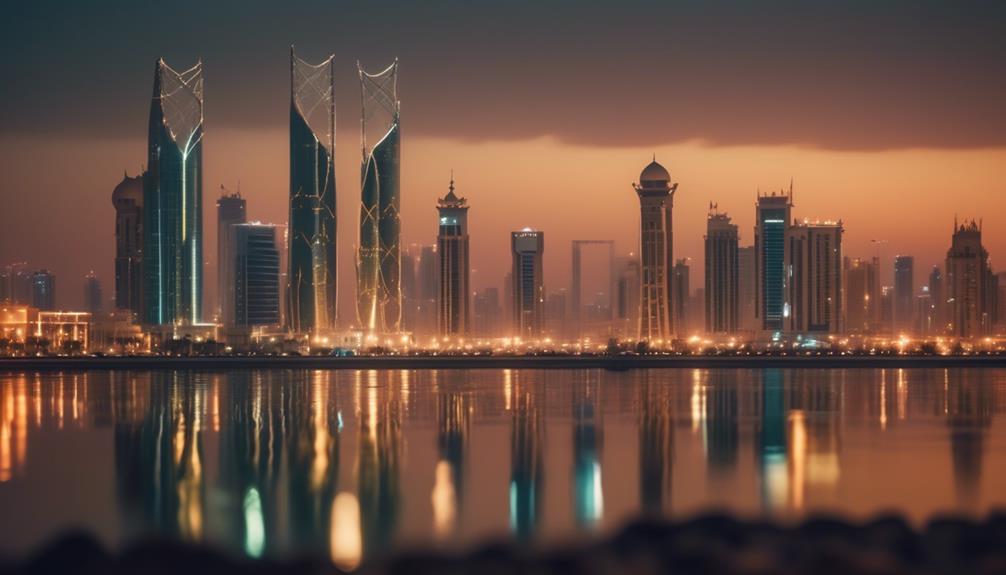
Skyscrapers stand as remarkable testaments to the meticulous and intricate art of steel welding. These towering structures, with their awe-inspiring heights and impressive architectural designs, are made possible through the expertise of skilled welders and the advancements in welding technology.
Skyscraper architecture pushes the boundaries of what is possible in construction, and steel welding plays a crucial role in their creation. Structural engineering is at the core of building skyscrapers. The ability to support immense weight loads and withstand external forces requires careful planning and execution. Steel, with its exceptional strength and flexibility, is the material of choice for these extraordinary structures. Welding is the process that binds the steel components together, creating a unified and robust framework.
The art of steel welding in skyscraper construction involves precise measurements, meticulous joint preparation, and expert welding techniques. Welders must have an in-depth understanding of different welding methods and be able to adapt to the unique challenges presented by each project. The quality of the welds directly impacts the structural integrity of the building, making the skill and expertise of welders absolutely essential.
Skyscrapers are not only marvels of engineering and architectural design but also stand as symbols of human achievement. They serve as a testament to the power of steel welding, showcasing the fusion of strength and precision that enables us to reach new heights in construction.
Artistic Metalwork: Fusion of Creativity and Strength
Artistic metalwork showcases the harmonious blending of creativity and strength in the realm of craftsmanship. The combination of artistic vision and technical skill allows metalworkers to create unique and visually stunning pieces that also possess the durability and resilience of metal. This fusion of creativity and strength is achieved through the use of creative welding techniques.
In artistic metalwork, welders employ various techniques to join and shape metal materials. These techniques include traditional welding methods such as gas welding, arc welding, and spot welding, as well as more specialized techniques like TIG (Tungsten Inert Gas) welding and MIG (Metal Inert Gas) welding. The choice of welding technique depends on the specific requirements of the artwork and the type of metal being used.
Creative welding techniques allow metalworkers to manipulate the metal in intricate and imaginative ways. They can create elaborate patterns, intricate details, and unique textures, transforming a plain piece of metal into a work of art. Welders can also experiment with different finishes and coatings to enhance the visual appeal of the artwork.
Artistic metalwork not only showcases the skill and creativity of the welder but also serves as a testament to the versatility and strength of metal as a medium. By combining artistic vision with creative welding techniques, metalworkers can create stunning pieces that captivate the viewer while embodying the power and durability of metal.
Impact of Jeddah’s Welding Industry on the Middle East
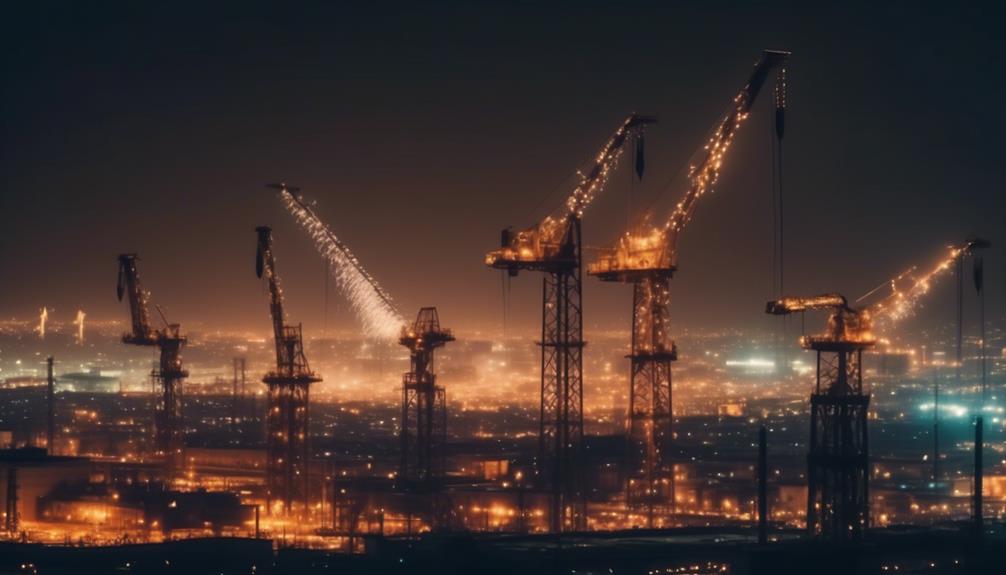
The welding industry in Jeddah, Saudi Arabia, has had a significant impact on the Middle East. The economic growth in the region owes much to the thriving welding sector in Jeddah. The demand for welding services is on the rise due to various construction projects, including infrastructure development, oil and gas installations, and industrial expansion. As a result, the welding industry has contributed to the overall economic growth of not just Jeddah, but also the entire Middle East region.
Moreover, the welding industry has created numerous job opportunities for both skilled and unskilled workers. The demand for welders, fabricators, and technicians has surged, leading to increased employment rates. Local workers have benefited from the expanding welding industry, as it provides stable and well-paying jobs. Additionally, the industry has attracted foreign workers with welding expertise, contributing to cultural diversity and knowledge exchange.
The impact of Jeddah’s welding industry extends beyond economic growth and job opportunities. It has played a crucial role in developing the Middle East’s infrastructure and promoting industrial progress. The welding industry has provided the necessary support for the construction of residential and commercial buildings, bridges, and other vital structures, thus enhancing the region’s overall development.
Frequently Asked Questions
What Are the Different Types of Welding Techniques Used in Jeddah’s Welding Industry?
There are various welding techniques utilized in Jeddah’s welding industry, particularly in the realm of steel materials. These techniques include gas metal arc welding, shielded metal arc welding, tungsten inert gas welding, and flux-cored arc welding.
How Has the Welding Industry in Jeddah Contributed to the Economic Growth of Saudi Arabia?
The welding industry in Jeddah has played a significant role in Saudi Arabia’s economic growth. Jeddah’s expertise in welding steel materials has attracted investments and created job opportunities, contributing to the overall development of the country’s economy.
Are There Any Specific Safety Regulations or Certifications Required for Welders in Jeddah?
Safety regulations and certifications are essential for welders in Jeddah, Saudi Arabia. These measures ensure the protection of workers and the public, promoting a safe working environment in the welding industry amidst the extreme weather conditions prevalent in Jeddah.
What Are Some of the Challenges Faced by Welders in Jeddah’s Extreme Weather Conditions?
Welders in Jeddah, Saudi Arabia face various challenges due to extreme weather conditions. These challenges include the need for strict adherence to safety regulations to ensure the well-being of the workers and the quality of the welding process.
How Has the Use of Robotics and Automation Affected the Welding Industry in Jeddah?
The integration of robotics and automation in the welding industry in Jeddah has had a significant impact on welding efficiency. By utilizing advanced technology, such as robotic arms and automated systems, the welding process has become faster, more precise, and more cost-effective.
Conclusion
In conclusion, the welding industry in Jeddah, Saudi Arabia has played a crucial role in the development of the Middle East.
Through advancements in technology, Jeddah has become a hub for welding expertise, particularly in the construction of skyscrapers and artistic metalwork.
The fusion of strength and creativity in welding steel materials has not only transformed the architectural landscape of Jeddah but has also contributed to the region’s economic growth and cultural expression.
